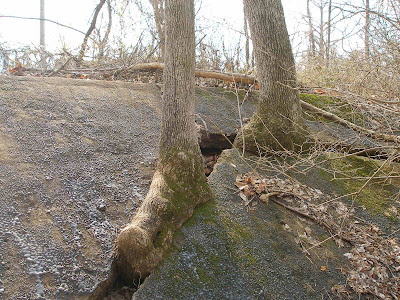
Lexington Mall was always troubled, since day one. Though they opened in 1971 with its anchor stores McAlpin's and Shoppers Choice supermarket, the developers went bankrupt before they could finish the actual indoor-mall part in the middle. It wasn't until 1975 that the place was finished.
The 1980s were good years, however. During the flavored popcorn craze, Lexington Mall's Karmelkorn shop was named the #1 sales-leader in the nation, according to Wikipedia. (Do they mean among Karmelkorn outlets? Or mall stores in general? They didn't specify or clarify.) The prestigious County Market replaced Consolidated as the mall's latest supermarket, and I can remember the huge local buzz of excitement at the time. This was about the same time as the Starbucks plan of world domination was really taking off, and as the private shopper's club Pace became popular. There was a feeling that all of us were really moving on up, and going upscale.
But by the booming years of the Clinton economy, we'd all gotten
so upscale that we outgrew the Lexington Mall. The over-the-top
Hamburg Pavilion sucked away Lexington Mall's rapidly dwindling customer base. Many more on the other side of town had already been lost to Fayette Mall, which reinvented itself with a massive makeover. Rather than renovating and expanding, Lexington Mall was devolving: County Market pulled out in 1995, Sony Theaters in 1997, and soon Dillard's was the sole remaining tenant. In 2005 they closed and the mall has sat empty ever since.
In an article called "City in the Dark as Saul Stonewalls", from the September 22, 2006 issue of
Business Lexington, it was lamented that the mall's owners, a real-estate-hoarding group in Maryland called
Saul Centers, were being obstinate and uncommunicative in Lexington's efforts to make them do something with their property that had become an eyesore and a waste of space. Unfortunately, it's a problem with shopping malls and shopping centers around the country - they're almost all owned by some guy in a faraway city who couldn't care less about the impact his decisions have on the cities in which his properties lay dormant.

There is new hope for the property today, although the light at the end of the tunnel may be an oncoming church.
Southland Christian Church is moving in with big changes and big plans for everybody. Pastor Jon Weese has announced the timetable for turning the area into their new satellite campus: their goal is to complete their own new building in December 2012, and demolition of Lexington Mall will begin in May.
I checked the Southland Christian blog and it provided a fascinating glimpse into their mindset. One post suggests that their flock stop
"holding onto stuff", and instead sell it to help the church. It says:
"From coffee to sports cars, people are realizing that a temporary sacrifice of convenience right now can make a substantial impact for the Kingdom for years to come!"
It also reprints a letter from one of the faithful that gleefully tells of how they're selling their new 2007 Corvette Convertible with only 2000 miles on it, so that they can give that money to the church to build this new building. The letter closes:
"We believe that being a part in the hands and feet of Jesus on Richmond Road are more satisfying than those 4 Corvette tires on the roads of Lexington!"
Well, they're certainly dedicated, I'll say that for them. And then
this post from their blog gives helpful tips on how to cut back your lifestyle in order to better serve the church:
"Drink water instead of soda. Drink a tall black coffee instead of a venti latte. Or forego the overpriced coffee altogether and meet your friend at one of your homes. Buy a reusable bottle instead of buying case after case of bottled water. Get just a sandwich instead of a value meal at the drive-thru, I promise you won't starve to death. Rent a movie for $1 at RedBox instead of spending $9 at the theater."
(I don't mean to pick on these folks, but this is seriously the first time I think I've ever seen a church come right out and ask people to
cut back on eating food in order to donate to said church.)
But nevertheless, I wish them well. Many people criticize megachurches for no other reason than that they are megachurches. Me, I applaud any entity that has the moxie to keep expanding and setting their sights higher and higher (much like the aforementioned Starbucks). Whether or not I fully agree with their agenda is irrelevant; I support them anyway out of respect for their ability to get things done. Those who dislike them are free to get something bigger done themselves.
I just wish they hadn't chosen such a modernistic "big glass box" design for their new branch (see image above).





























































